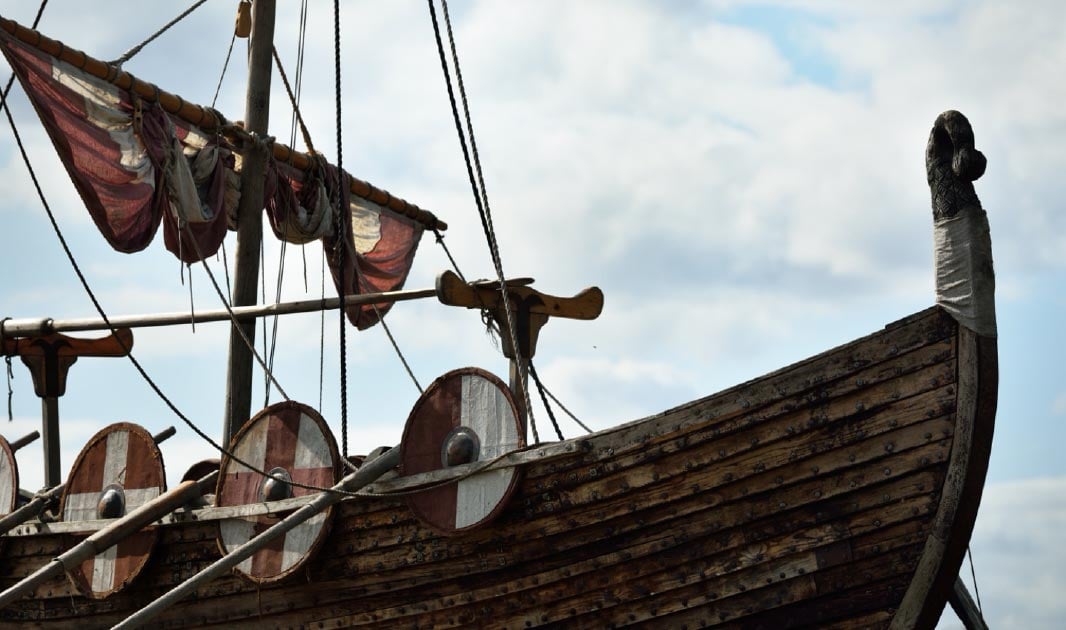Exploring The Mystery Of A Sixth-Century Vessel Discovered At Sutton Hoo

Table of Contents
The Discovery and Excavation of the Sutton Hoo Ship Burial
The Sutton Hoo ship burial’s discovery was almost accidental. In the spring of 1939, Edith Pretty, the landowner of Sutton Hoo, contacted Basil Brown, a local self-taught archaeologist, to investigate some intriguing mounds on her property. Brown's meticulous excavation, initially hampered by the onset of World War II and limited resources, revealed a massive ship-shaped burial mound. The process was painstaking, involving careful removal of the earth layer by layer to avoid damaging the delicate artifacts within.
The challenges faced by Brown and the later archaeological team were numerous:
- The Wartime Context: The excavation coincided with the outbreak of World War II, limiting resources and manpower.
- Preservation Concerns: The fragile nature of the artifacts required meticulous care during their removal and preservation.
- Limited Technology: The excavation relied on relatively rudimentary tools and techniques compared to modern archaeological methods.
Key figures involved in the excavation included:
- Basil Brown: The self-taught archaeologist who made the initial discovery and conducted the primary excavation.
- Charles Phillips: A professional archaeologist who later joined the excavation and provided crucial expertise.
- Edith Pretty: The landowner who commissioned the excavation.
Initially, the significance of the find was not fully appreciated. However, as more artifacts were unearthed, the scale and importance of the Sutton Hoo ship burial became increasingly clear, solidifying its place as a pivotal moment in Anglo-Saxon archaeological studies in Suffolk, England.
The Contents of the Sutton Hoo Ship: A Treasure Trove of Anglo-Saxon Artifacts
The Sutton Hoo ship burial yielded an astonishing array of Anglo-Saxon artifacts, providing unparalleled insight into the craftsmanship, artistry, and social structures of the period. The treasures discovered within the vessel were remarkably well-preserved, offering a unique glimpse into the life and death rituals of the Anglo-Saxons.
The artifacts included:
- A magnificent helmet: Decorated with intricate ironwork and bearing evidence of gilding.
- An ornate shield: With its remains hinting at a striking design.
- Elaborate weaponry: Including swords, spears, and seaxes (Anglo-Saxon knives).
- Stunning jewelry: Featuring gold, silver, garnets, and other precious stones; brooches, and other personal ornaments.
- Ceremonial objects: Such as drinking horns and bowls.
- Household goods: Including utensils, tools, and textiles.
These Anglo-Saxon artifacts, many crafted from gold and silver, demonstrate a high level of skill and artistry, indicating a sophisticated and wealthy society. (Include high-quality image descriptions here or actual images. Example Alt Text: "Image of the Sutton Hoo helmet, showcasing its intricate ironwork and gilding.") The presence of such a lavish array of grave goods speaks volumes about the status and power of the individual interred within the ship.
Unraveling the Mystery: Who was Buried in the Sutton Hoo Ship?
The identity of the individual buried within the Sutton Hoo ship remains a subject of ongoing scholarly debate. Several theories have been proposed:
- A powerful East Anglian king: The richness of the grave goods suggests a person of exceptional status, possibly a king or a high-ranking member of the royal family.
- A powerful chieftain: Another theory posits the deceased as a powerful chieftain, possibly ruling over a significant portion of East Anglia.
- A symbolic burial: Some scholars suggest the burial might have been a symbolic one, representing the power and prestige of the East Anglian kingdom rather than a specific individual.
Evidence supporting these theories includes the location of the burial, the type and quantity of grave goods, and the overall context of the Anglo-Saxon social structure of the time. The burial's location near the River Deben suggests a strategically important position. The quantity and quality of the artifacts further reinforce the high status of the deceased. However, the absence of direct identifying information leaves the identity of the buried individual uncertain.
The Sutton Hoo Ship Burial in the Broader Context of Anglo-Saxon History
The Sutton Hoo ship burial offers invaluable insights into the cultural and religious practices of the Anglo-Saxons in the migration period. The lavish grave goods suggest a complex belief system involving a possible blend of pagan and early Christian influences.
Its significance in the broader context of Anglo-Saxon history is substantial:
- Understanding Anglo-Saxon Society: The burial provides crucial information about the social hierarchy, wealth, and power structures of Anglo-Saxon England.
- Religious Practices: The artifacts shed light on Anglo-Saxon religious beliefs and burial rituals, hinting at potential syncretism between pagan traditions and emerging Christianity.
- Trade and Exchange: The presence of exotic materials in the artifacts reveals the extent of Anglo-Saxon trade networks with continental Europe.
The Sutton Hoo ship burial is not an isolated find; it fits within a broader landscape of important Anglo-Saxon sites and artifacts across England, helping to paint a more complete picture of this fascinating historical period.
Conclusion
The Sutton Hoo ship burial remains a captivating enigma, offering a treasure trove of information about Anglo-Saxon England. Its discovery in 1939 continues to fascinate and inspire research, continuously challenging and refining our understanding of this pivotal period. The mystery surrounding the identity of the buried individual and the intricate details of the artifacts continue to fuel scholarly debate and public interest. The wealth of grave goods, the grandeur of the ship burial itself, and its place within the wider context of Anglo-Saxon history solidify its significance as one of the most important archaeological finds ever made in Britain. Delve deeper into the mysteries of the Sutton Hoo ship burial and explore the fascinating world of Anglo-Saxon history. Discover more about this incredible archeological find today!

Featured Posts
-
 Cenovus Ceo Meg Acquisition Unlikely Amid Focus On Internal Growth
May 25, 2025
Cenovus Ceo Meg Acquisition Unlikely Amid Focus On Internal Growth
May 25, 2025 -
 Carolina Country Music Fest 2025 Tickets Gone
May 25, 2025
Carolina Country Music Fest 2025 Tickets Gone
May 25, 2025 -
 Kiefer Sutherland Casting News Sends Fans Into A Frenzy
May 25, 2025
Kiefer Sutherland Casting News Sends Fans Into A Frenzy
May 25, 2025 -
 Jenson Fw 22 Extended Everything You Need To Know
May 25, 2025
Jenson Fw 22 Extended Everything You Need To Know
May 25, 2025 -
 Vspominaya Sergeya Yurskogo 90 Let So Dnya Rozhdeniya Vydayuschegosya Aktera
May 25, 2025
Vspominaya Sergeya Yurskogo 90 Let So Dnya Rozhdeniya Vydayuschegosya Aktera
May 25, 2025
